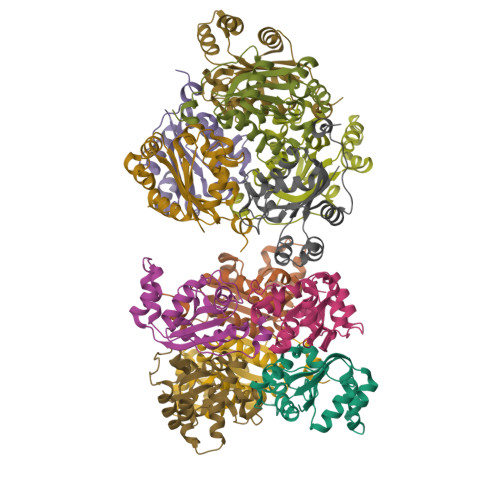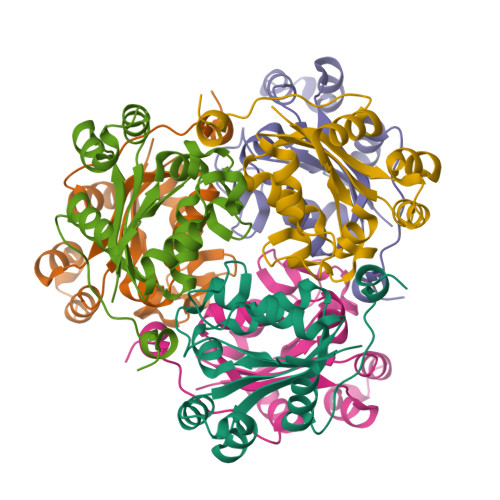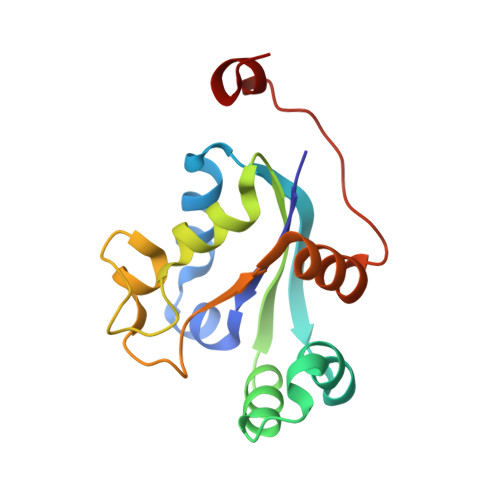The Maize (Zea mays L.) Nucleoside Diphosphate Kinase1 (ZmNDPK1) Gene Encodes a Human NM23-H2 Homologue That Binds and Stabilizes G-Quadruplex DNA.
Kopylov, M., Bass, H.W., Stroupe, M.E.(2015) Biochemistry 54: 1743-1757
- PubMed: 25679041
- DOI: https://doi.org/10.1021/bi501284g
- Primary Citation of Related Structures:
1VYA - PubMed Abstract:
Noncanonical forms of DNA like the guanine quadruplex (G4) play important roles in regulating transcription and translation through interactions with their protein partners. Although potential G4 elements have been identified in or near genes from species diverse as bacteria, mammals, and plants, little is known about how they might function as cis-regulatory elements or as binding sites for trans-acting protein partners. In fact, until now no G4 binding partners have been identified in the plant kingdom. Here, we report on the cloning and characterization of the first plant-kingdom gene known to encode a G4-binding protein, maize (Zea mays L.) nucleoside diphosphate kinase1 (ZmNDPK1). Structural characterization by X-ray crystallography reveals that it is a homohexamer, akin to other known NDPKs like the human homologue NM23-H2. Further probing into the G4-binding properties of both NDPK homologues suggests that ZmNDPK1 possesses properties distinct from that of NM23-H2, which is known to interact with a G-rich sequence element upstream of the c-myc gene and, in doing so, modulate its expression. Indeed, ZmNDPK1 binds the folded G4 with low nanomolar affinity but corresponding unfolded G-rich DNA more weakly, whereas NM23-H2 binds both folded and unfolded G4 with low nanomolar affinities; nonetheless, both homologues appear to stabilize folded DNAs whether they were prefolded or not. We also demonstrate that the G4-binding activity of ZmNDPK1 is independent of nucleotide binding and kinase activity, suggesting that the G4-binding region and the enzyme active sites are separate. Together, these findings establish a broad evolutionary conservation of some NDPKs as G4-DNA binding enzymes, but with potentially distinct biochemical properties that may reflect divergent evolution or species-specific deployment of these elements in gene regulatory processes.
Organizational Affiliation:
Department of Biological Science and ‡Institute of Molecular Biophysics, Florida State University , 91 Chieftan Way, Tallahassee, Florida 32306-4380, United States.



















